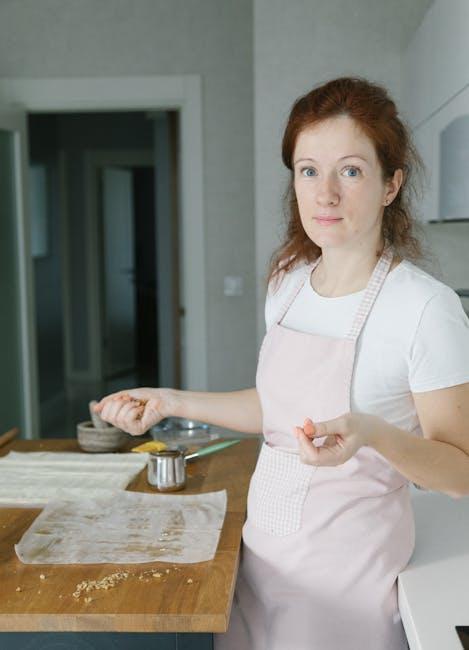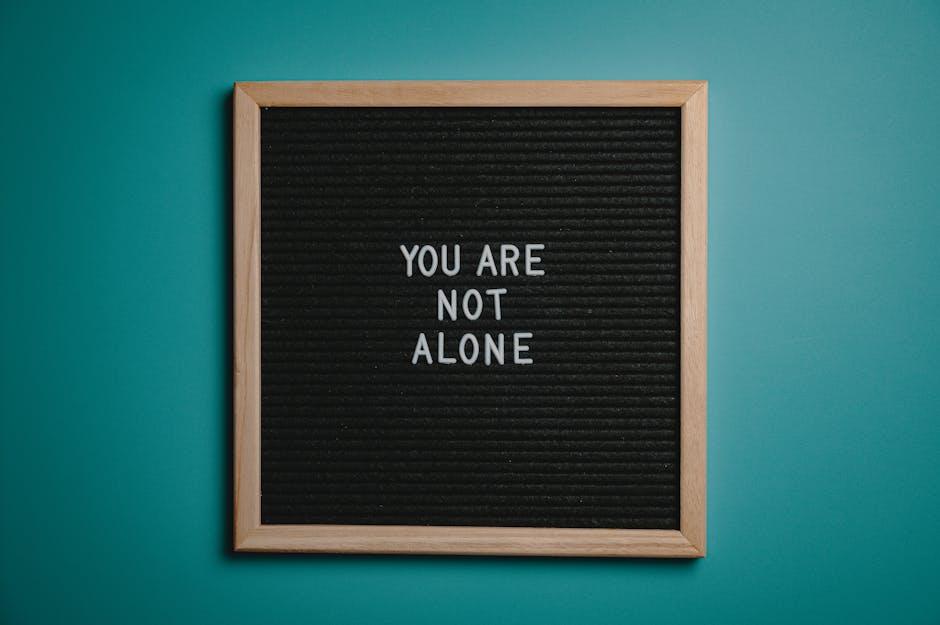In the quiet rhythms of daily homemaking, the ability to say no can be as vital as the art of saying yes. Amidst the endless ebb and flow of tasks, requests, and well-meaning advice, learning to draw boundaries is not just a skill-it’s a form of self-respect and balance. For homemakers, who often navigate a landscape abundant with expectations both seen and unseen, mastering the art of saying no becomes a gentle but powerful act that preserves energy, fosters clarity, and ultimately nurtures the heart of the home. This article explores how embracing this subtle art can transform not only the daily to-do list but also the very essence of domestic life.
Understanding the Importance of Setting Boundaries at Home

Creating clear personal limits is essential for maintaining harmony and well-being in the household. When boundaries are set with intention and consistency, they serve as a protective framework that prevents emotional exhaustion and promotes healthy relationships. It’s not about shutting others out but about prioritizing one’s own needs and time, which ultimately benefits everyone in the home. By confidently communicating what is and isn’t acceptable, homemakers foster an environment of respect and mutual understanding.
Effective boundary-setting involves practical steps such as:
- Defining specific times for rest and personal pursuits.
- Communicating limits gently yet firmly with family members.
- Recognizing personal capacity to avoid overcommitment.
- Staying consistent to reinforce those boundaries over time.
These elements work together to transform the act of saying “no” from a feeling of guilt into an empowering choice. The result is a balanced home atmosphere where emotional energy is preserved, and everyone thrives within their roles without undue pressure.
Recognizing Your Limits Without Guilt

It’s essential to understand that setting boundaries is not a sign of weakness or selfishness. Embracing your capacity with kindness allows you to maintain balance and peace in your daily life. When you honor your limits, you cultivate a healthier environment for yourself and those around you. This mindset shift empowers you to prioritize what truly matters and reduces unnecessary stress caused by overcommitment.
Here are some gentle reminders to help you embrace your limits without shame:
- Self-awareness: Regularly check in with your feelings and energy levels.
- Clear communication: Express your needs honestly and respectfully.
- Prioritization: Focus on tasks and commitments that align with your values and well-being.
- Compassion: Treat yourself with the same kindness you offer others, recognizing that limits are natural.
| Scenario | Possible Limit | Positive Outcome |
|---|---|---|
| Helping a neighbor | Decline if tired | Preserves your energy |
| Additional household chores | Say no during busy times | Prevents burnout |
| Volunteer commitments | Limit frequency | Maintains focus on family |
Effective Communication Techniques for Saying No Gracefully

Mastering the ability to say no with kindness and clarity can transform your interactions from awkward to empowering. Start by acknowledging the request with appreciation, then offer a clear and honest response without over-explaining. For example, phrases like “I really appreciate you thinking of me, but I won’t be able to commit to that right now.” or “Thank you for asking; however, I need to focus on my current priorities.” strike a balance between respect and firmness. A gentle but decisive tone conveys confidence and sincerity, ensuring your message is both understood and respected.
Non-verbal cues play a crucial role in reinforcing your words. Maintain eye contact, use a calm voice, and adopt an open posture to communicate sincerity and assertiveness. If you’re uncomfortable with a direct no, you can use techniques such as offering alternatives or suggesting a later time to revisit the request. Here’s a quick reference table of techniques:
| Technique | Example Phrase | When to Use |
|---|---|---|
| Appreciative Decline | “Thanks for thinking of me, but I’ll pass.” | Turning down favors or outings |
| Boundary Setting | “I can’t take on more tasks right now.” | Managing workload |
| Alternative Offering | “I can’t, but maybe [someone else] can help.” | Maintaining connections while declining |
| Deferred Response | “Let me think about it and get back to you.” | When unsure or overwhelmed |
Practical Strategies to Prioritize Self-Care and Family Needs

Balancing self-care and family demands often feels like walking a tightrope, but setting clear boundaries can transform this delicate dance into a graceful routine. Start by recognizing that your needs are just as important as those of your loved ones. Incorporate daily self-care rituals that recharge your spirit-whether it’s a quiet cup of tea, a 10-minute meditation, or a brisk walk. Communicating these moments to your family creates mutual respect and models healthy boundaries for everyone. Embrace the power of selective yeses, where you thoughtfully agree only to commitments aligned with your well-being and family priorities.
- Schedule “me time” on the family calendar to make it non-negotiable.
- Delegate household tasks to encourage shared responsibility and reduce overwhelm.
- Use gentle reminders like sticky notes or alarms to reinforce your boundaries.
- Practice assertive communication techniques to say no without guilt.
| Strategy | Benefit | Tip |
|---|---|---|
| Morning Routine | Sets a calm tone for the day | Include 5 minutes of deep breathing |
| Family Check-ins | Keeps everyone aligned | Weekly meetings to discuss needs |
| Declining Invitations | Saves energy and time | Offer alternative plans |
Closing Remarks
Mastering the art of saying no is more than just setting boundaries-it’s a quiet act of self-respect woven into the daily fabric of homemaking. By learning to decline without guilt, homemakers reclaim time, space, and energy to nurture not only their loved ones but themselves. Saying no is not a refusal of help or connection; it is an invitation to intentional living, where choices reflect true priorities. In this delicate balance, the simple word “no” becomes a powerful tool, transforming the home into a sanctuary of harmony and purpose.














